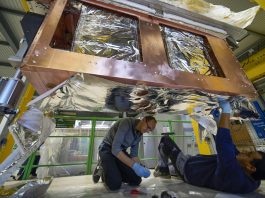Researchers Nikolaos Kidonakis and Marco Guzzi of Kennesaw State University (KSU) have been awarded their second joint grant from the National Science Foundation (NSF) in three years.
This prestigious grant will advance the study of the Higgs boson, the top quark, and the proton — all key elements of theoretical particle physics and critical to the physics programme at the Large Hadron Collider (LHC) at CERN in Switzerland.
The $500,000 grant continues KSU’s growing reputation as a centre for cutting-edge research, particularly in particle physics, and further establishes the university’s unique contribution to the field.
History and significance of the Higgs boson
The Higgs boson, often referred to as the ‘God particle,’ was theorised in 1964 by physicist Peter Higgs and others to explain how particles acquire mass.
The particle remained elusive for decades until its discovery in 2012 at CERN’s LHC, a milestone in physics that confirmed the existence of the Higgs field — a crucial component of the Standard Model of particle physics.
Since then, the Higgs boson has become a focal point for researchers aiming to uncover deeper truths about the universe, including how particles interact and why they possess mass.
Current research continues to probe its properties, such as its interaction with other particles like the top quark, providing insight into the fundamental workings of the cosmos.
A synergistic partnership
For Kidonakis, a professor at KSU’s College of Science and Mathematics since 2004, this marks his seventh NSF grant, reflecting his sustained contributions to particle physics.
Guzzi, his colleague, emphasised the strength of their collaboration: “Receiving this grant is a confirmation that the synergy works between Nik and me, and we have been able to sustain a very competitive and strong research group here at KSU.”
Their collaboration brings together unique expertise, with Kidonakis focusing on theoretical calculations involving the top quark — the heaviest elementary particle — and the Higgs boson, which plays a crucial role in mass generation.
Guzzi, on the other hand, specialises in understanding the structure of the proton and its internal dynamics.
The duo’s efforts are part of KSU’s broader emphasis on undergraduate research, as they often involve students in their projects, giving them hands-on experience in high-level theoretical and computational physics.
Advancing physics and STEM education
Beyond their groundbreaking research, Kidonakis and Guzzi are dedicated to training the next generation of physicists.
KSU’s strong focus on undergraduate involvement in research has positioned the university as a destination for aspiring scientists.
“When you do this kind of research, you involve students, then they go to graduate school, acquire a lot of experience, and become knowledgeable about areas in both theoretical and computational physics,” Guzzi said.
With this latest grant supporting their work through 2027, KSU’s particle physics group is set to remain at the forefront of global research while continuing to mentor and inspire students pursuing careers in STEM.
The NSF grant represents not only a significant step forward for KSU’s research but also a broader contribution to global efforts in understanding the Higgs boson and the universe.
This work, a blend of cutting-edge science and student education, solidifies KSU’s place on the map in theoretical physics.





